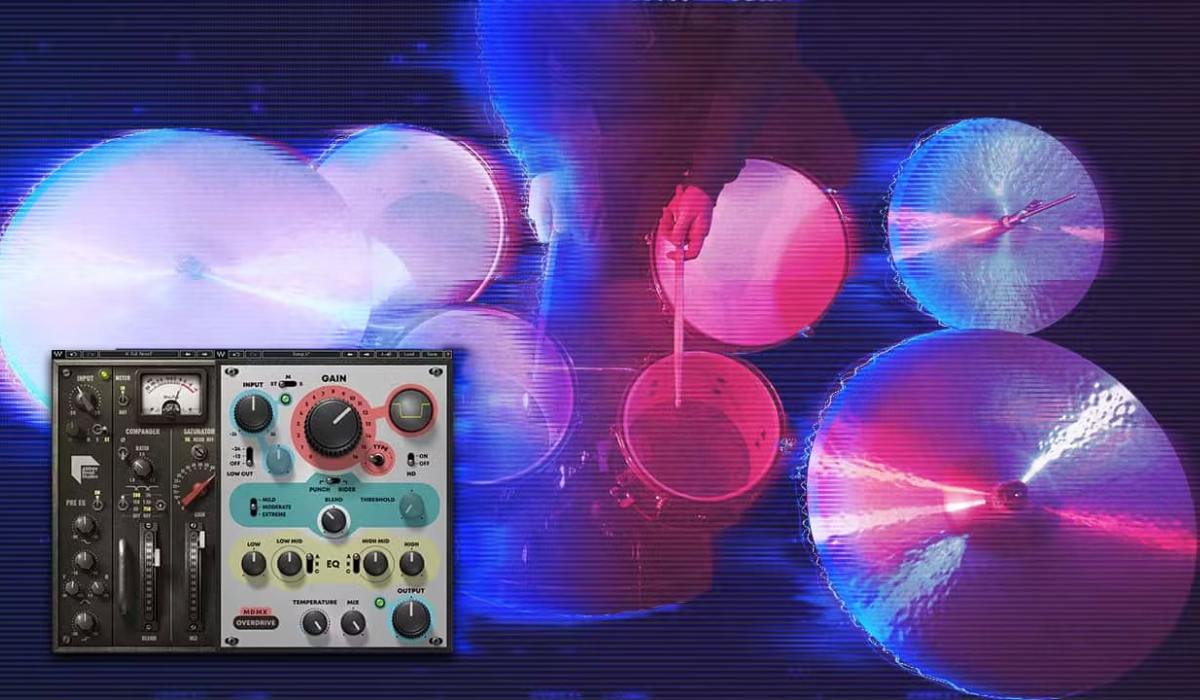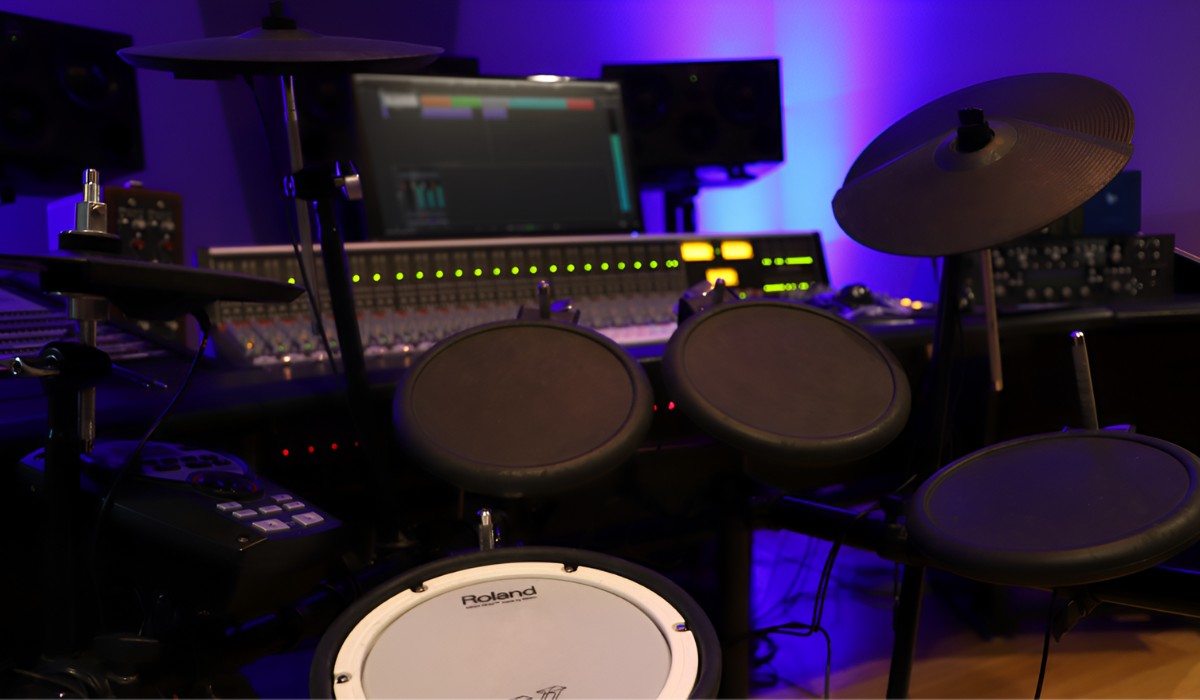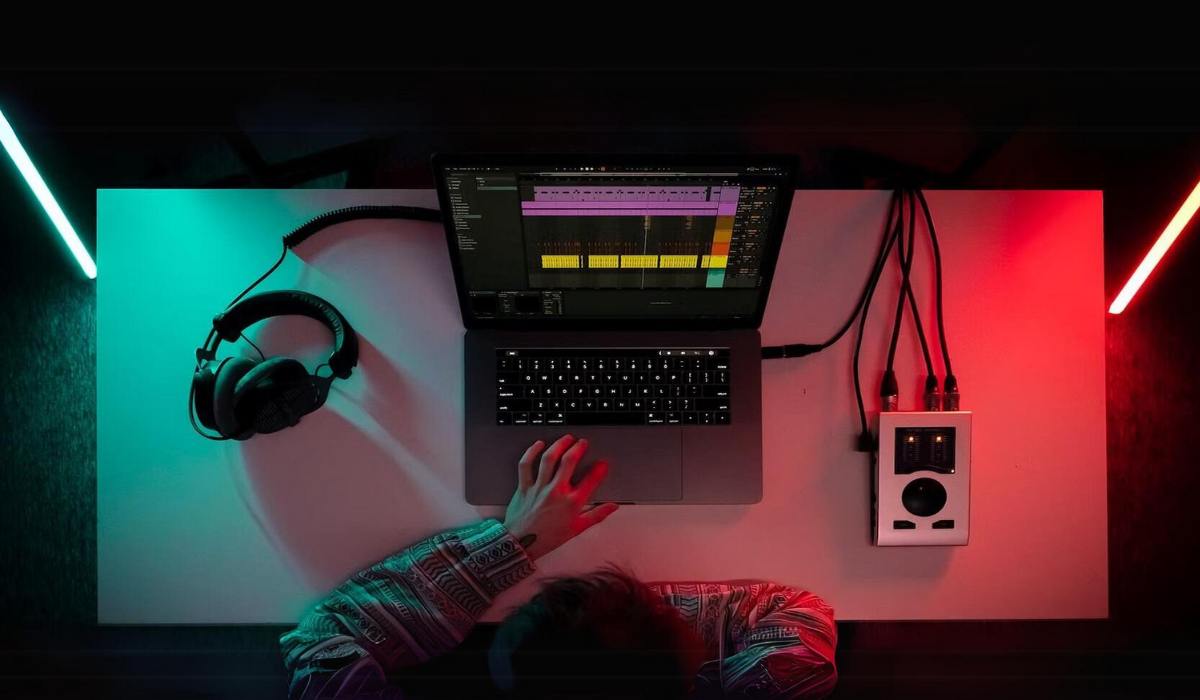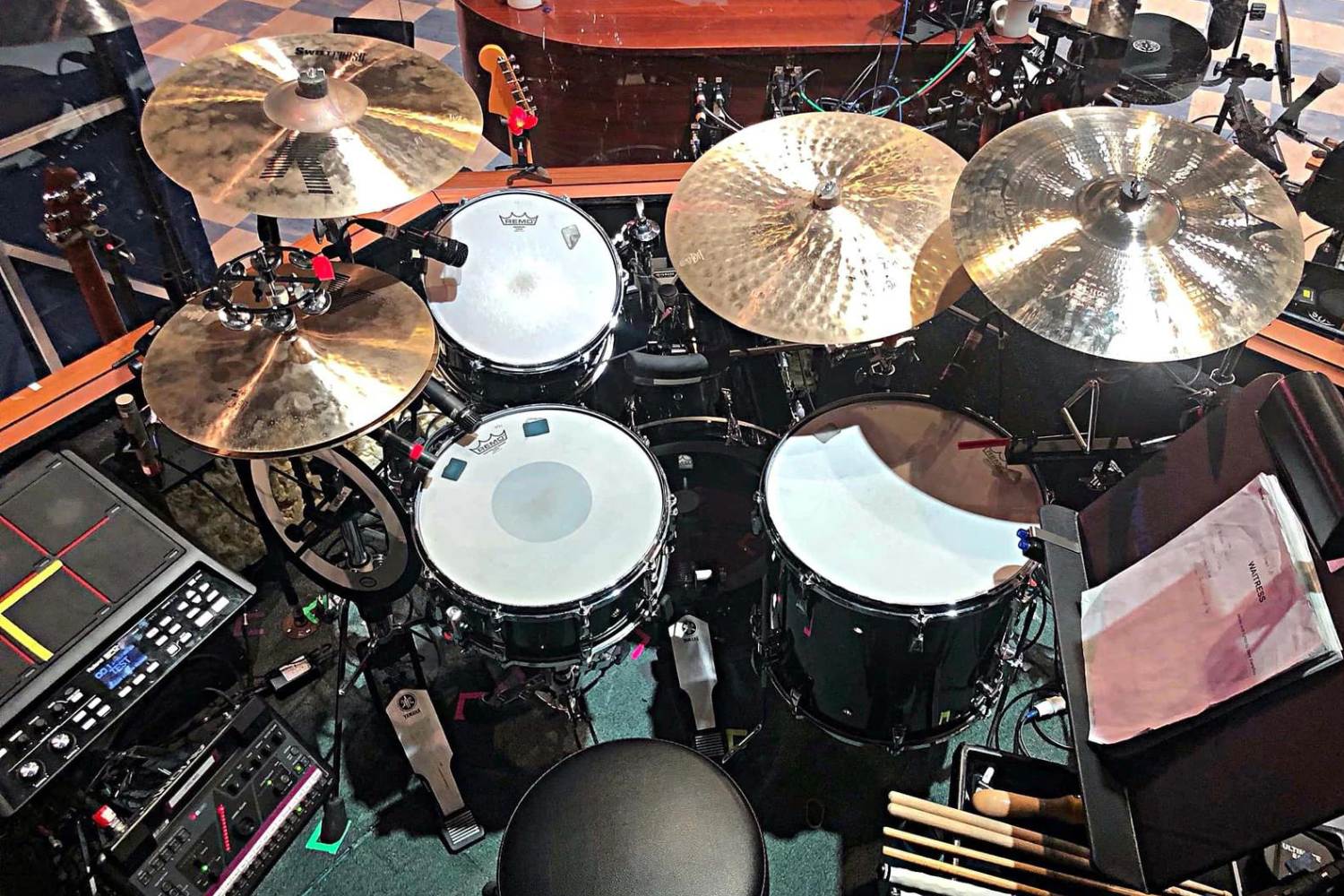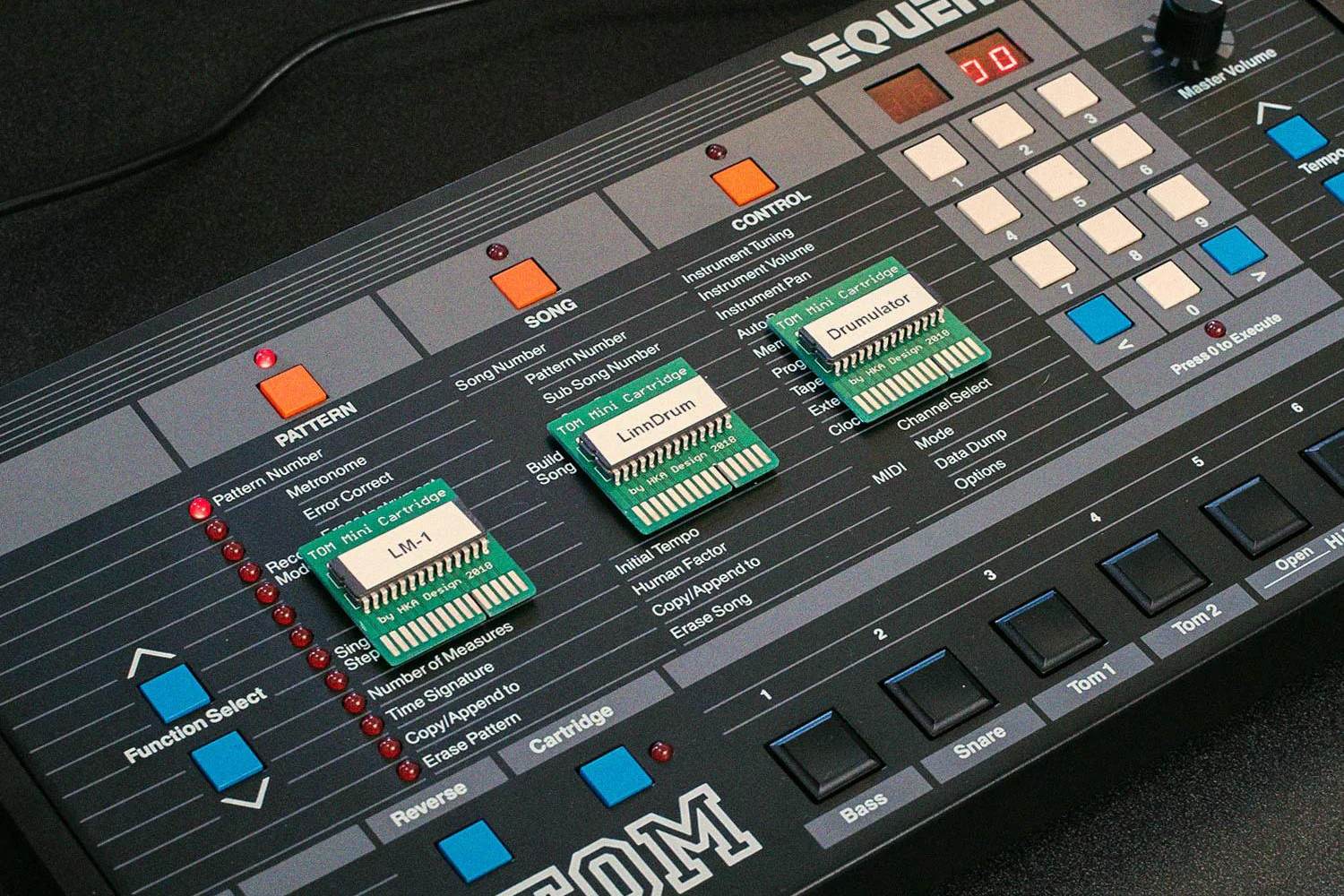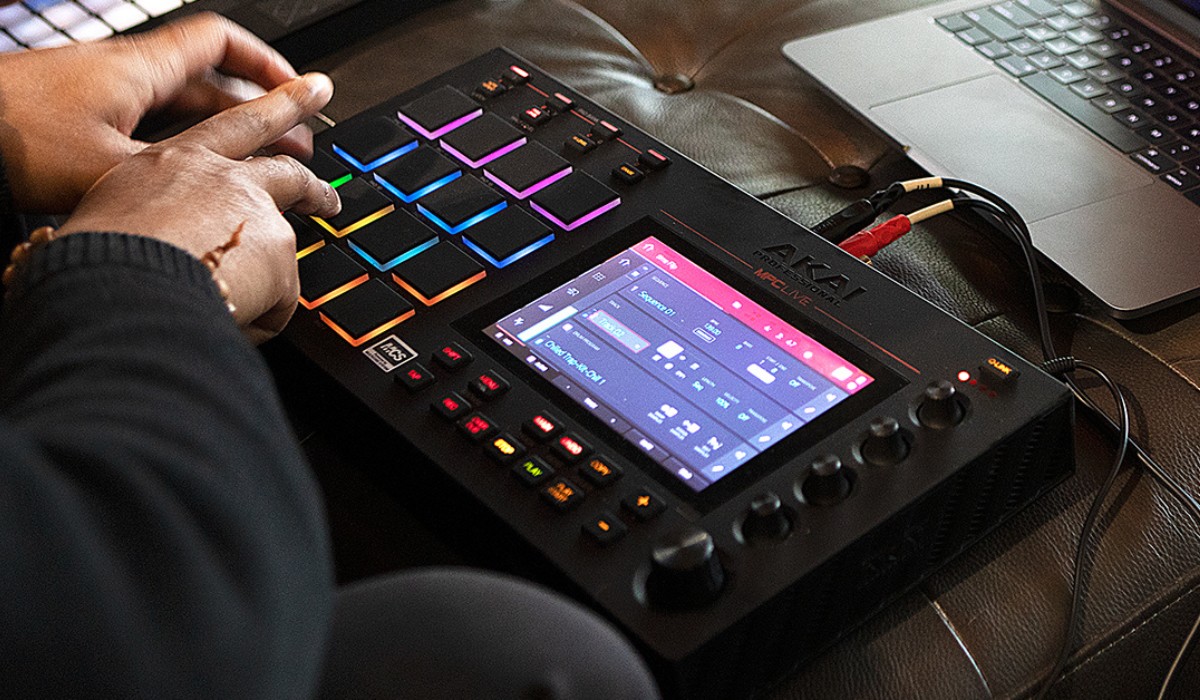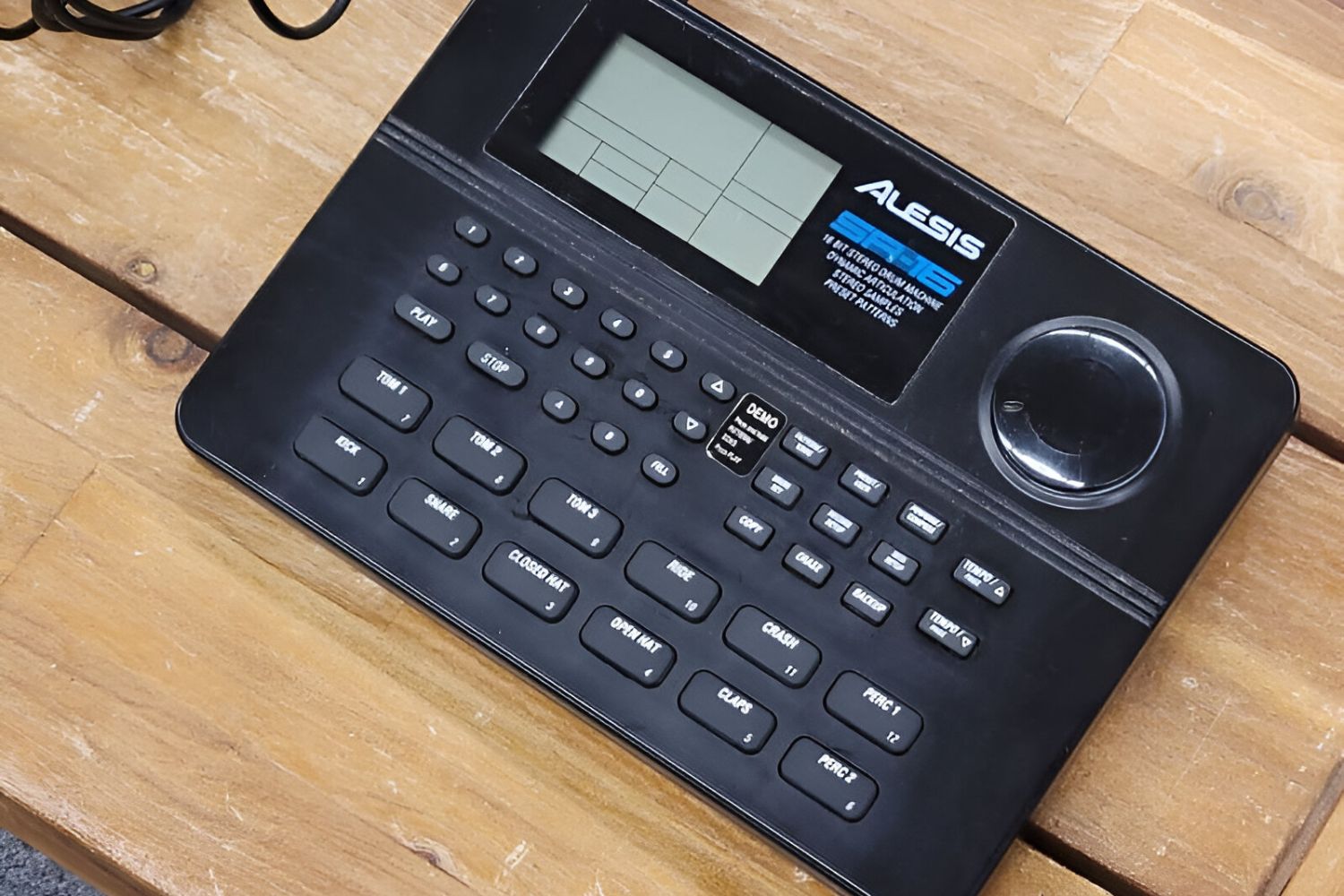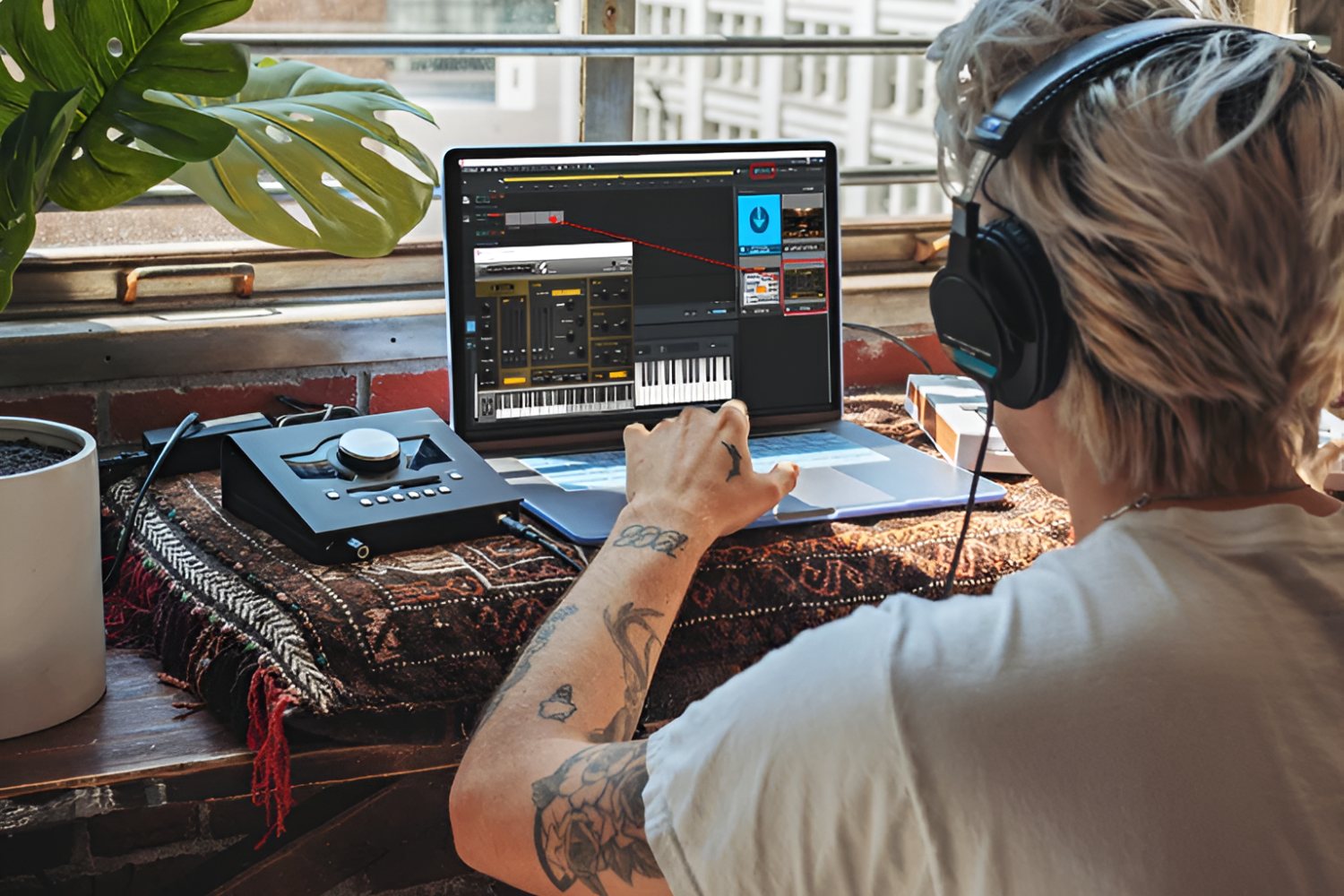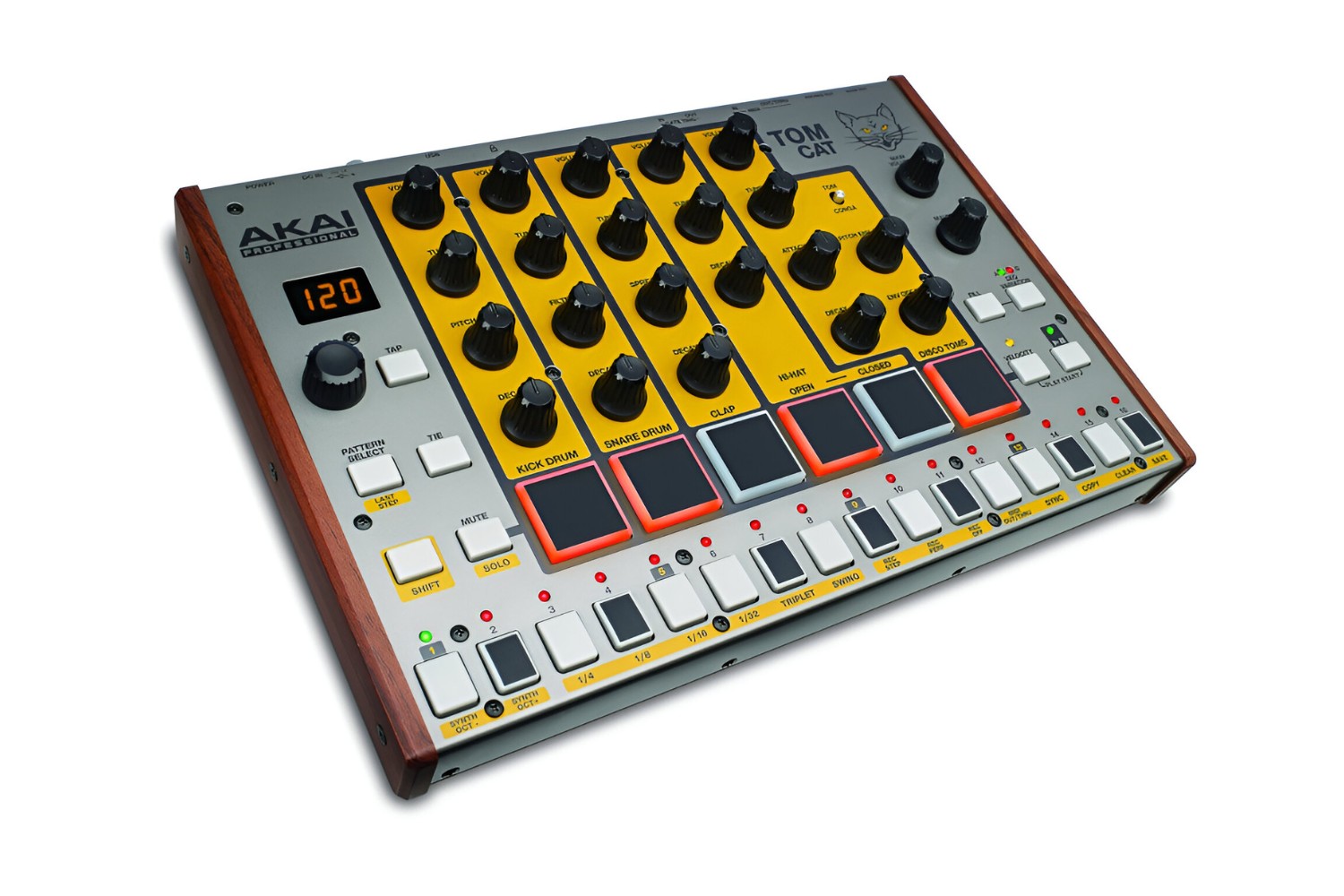Introduction
Welcome to the world of digital drum machines and the art of distortion! Whether you're a music producer, a live performer, or a passionate hobbyist, the fusion of digital drum machines and distortion opens up a realm of creative possibilities. In this guide, we'll delve into the techniques and tools that can transform the crisp, clean beats of a digital drum machine into gritty, edgy, and sonically captivating rhythms.
The marriage of digital drum machines and distortion has been a driving force in the evolution of music across various genres, from electronic and hip-hop to rock and pop. By distorting drum machine sounds, you can inject raw energy, add depth, and create unique textures that elevate your compositions and performances to new heights.
In this comprehensive guide, we'll explore the fundamental concepts of digital drum machines and distortion, discuss the selection of the right drum machine for distortion, delve into the use of distortion pedals with digital drum machines, and uncover the potential of applying software-based distortion. We'll also venture into the realm of experimenting with different distortion techniques and provide valuable tips for achieving the best distorted drum machine sound.
Whether you're a newcomer to the world of music production or a seasoned veteran seeking fresh inspiration, this guide will equip you with the knowledge and techniques to unleash the full sonic potential of your digital drum machine through the art of distortion. So, let's embark on this sonic journey and discover the myriad ways to distort a digital drum machine, igniting your creativity and pushing the boundaries of sonic expression.
Understanding the Basics of Digital Drum Machines
Before delving into the realm of distorting digital drum machines, it’s essential to grasp the fundamental workings of these versatile instruments. Digital drum machines are electronic devices designed to produce a wide array of percussive sounds, ranging from classic drum kit elements to futuristic and experimental beats. These machines offer a wealth of pre-programmed drum sounds and patterns, as well as the flexibility to create custom rhythms and sequences.
One of the defining features of digital drum machines is their ability to generate rhythmic patterns with precise timing and consistency, making them invaluable tools for music production, live performances, and sound design. These devices often include a diverse selection of drum and percussion sounds, such as kicks, snares, hi-hats, cymbals, toms, and various electronic and exotic percussion elements.
Many modern digital drum machines also incorporate advanced features, including built-in effects, sequencers, and the ability to integrate with computers and other music production gear. These features empower musicians and producers to sculpt and manipulate drum sounds with unparalleled control and creativity.
Understanding the interface and functionality of a digital drum machine is crucial for harnessing its sonic potential. Familiarizing yourself with concepts such as sound selection, pattern programming, tempo control, and performance modes will lay the groundwork for exploring the application of distortion to these rhythmic foundations.
As we venture into the realm of distorting digital drum machines, keep in mind that a solid comprehension of the basic operations and capabilities of these instruments will serve as the bedrock for unleashing your creativity and achieving captivating, distorted drum machine sounds.
Choosing the Right Drum Machine for Distortion
When embarking on the journey of distorting a digital drum machine, selecting the right instrument lays the groundwork for achieving compelling and impactful results. The ideal drum machine for distortion should offer a diverse range of high-quality drum sounds, intuitive programming capabilities, and the flexibility to integrate external effects and processing.
First and foremost, consider the sonic character of the drum machine’s built-in sounds. Look for a device that provides a rich selection of percussive elements, including punchy kicks, snappy snares, crisp hi-hats, and a variety of unique and textured percussion samples. The quality and versatility of the built-in sounds will greatly influence the depth and character of the distorted output.
Furthermore, the ability to program and customize drum patterns with ease is paramount. Seek a drum machine with an intuitive interface and robust sequencing capabilities, allowing for seamless creation and manipulation of rhythmic arrangements. A user-friendly workflow and comprehensive pattern editing tools will empower you to craft intricate and dynamic drum sequences ready for distortion.
Another crucial aspect to consider is the drum machine’s compatibility with external effects, particularly distortion pedals and processors. Look for devices that offer flexible audio routing options, such as individual outputs for each drum sound or dedicated effects sends and returns. This flexibility enables you to route specific drum sounds through external distortion units, granting you precise control over the level and character of distortion applied to each element.
Additionally, the integration of MIDI connectivity and USB capabilities can expand the sonic potential of a drum machine, allowing for seamless synchronization with software-based effects and production environments. The ability to harness the power of software plugins and virtual effects opens up a vast palette of sonic manipulation, complementing the analog warmth of hardware distortion.
By carefully considering the sonic palette, programming features, external processing capabilities, and integration options, you can select a drum machine that serves as an ideal canvas for the expressive application of distortion, laying the groundwork for crafting captivating and unique rhythmic textures.
Using Distortion Pedals with Digital Drum Machines
Integrating distortion pedals into the signal chain of a digital drum machine can yield compelling and diverse sonic outcomes, adding depth, character, and grit to the pristine drum sounds. Distortion pedals, renowned for their ability to sculpt and transform the timbre of musical signals, offer a wealth of tonal possibilities when paired with digital drum machines.
When selecting distortion pedals for use with a digital drum machine, consider the sonic characteristics and tonal shaping capabilities of each pedal. Different distortion pedals, such as overdrive, fuzz, and distortion, impart distinct colorations and textures to the incoming drum sounds, allowing for a broad spectrum of sonic manipulation.
One approach to integrating distortion pedals involves routing the individual outputs of a drum machine to separate input channels on the pedals, enabling independent processing of specific drum sounds. This method grants precise control over the level of distortion applied to each drum element, facilitating the creation of dynamic and nuanced rhythmic textures.
Experimentation with the placement of distortion pedals within the signal chain can yield varied results. Placing a distortion pedal before any time-based effects, such as reverb or delay, can accentuate the impact of the distortion, while positioning it after such effects can yield atmospheric and textured results. Additionally, cascading multiple distortion pedals in series can lead to complex and layered tonal transformations.
Furthermore, leveraging the interactive nature of distortion pedals, characterized by parameters like gain, tone, and level controls, allows for real-time manipulation and fine-tuning of the distorted drum sounds. This hands-on approach empowers musicians and producers to sculpt the sonic character of the drums with precision, shaping the intensity and timbre of the distortion to suit the musical context.
It’s important to note that the combination of distortion pedals and digital drum machines offers a vast playground for sonic exploration, inviting users to push the boundaries of conventional drum sound design and infuse their compositions with raw energy and expressive textures.
Applying Software Distortion to Digital Drum Machines
Software-based distortion presents a wealth of sonic manipulation possibilities for digital drum machines, offering a diverse array of tonal shaping tools, effects, and processing capabilities. By harnessing the power of software plugins and digital audio workstations (DAWs), musicians and producers can apply a wide range of distortion techniques to transform the clean and precise drum sounds of digital drum machines into gritty, edgy, and sonically captivating textures.
One of the primary advantages of software-based distortion lies in the sheer variety of distortion algorithms, emulations of analog hardware, and creative sound-shaping tools available within the digital realm. From classic tube saturation and analog tape emulation to extreme wavefolding and bit-crushing effects, software plugins offer an extensive palette of sonic colorations and textures for distorting drum machine sounds.
Moreover, the flexibility of software-based distortion allows for precise control over parameters such as drive, tone, saturation, and dynamics, empowering users to sculpt the timbre and intensity of the distortion with meticulous detail. This level of control facilitates the creation of custom distortion textures tailored to the specific sonic characteristics and musical context of the composition.
Another advantage of software-based distortion is its seamless integration within the digital production environment. By incorporating distortion plugins directly into the signal path of digital drum machines within a DAW, users can easily automate parameters, apply modulation effects, and experiment with signal routing to achieve dynamic and evolving distorted drum textures.
Furthermore, the combination of software-based distortion with digital drum machines opens up avenues for parallel processing, allowing users to blend the clean and distorted signals to varying degrees, creating a balance between the original drum sounds and the intensified, harmonically rich textures generated by the distortion effects.
It’s worth noting that the application of software-based distortion to digital drum machines transcends traditional sonic boundaries, offering a playground for creativity and experimentation. By leveraging the vast sonic palette and precise control afforded by software plugins, musicians and producers can push the sonic envelope, infusing their compositions with unique and captivating distorted drum textures.
Experimenting with Different Distortion Techniques
Exploring a diverse range of distortion techniques can unlock a world of sonic possibilities when working with digital drum machines. By experimenting with various distortion methods, musicians and producers can imbue their drum sounds with character, depth, and a compelling edge that elevates the sonic impact of their compositions.
One fundamental distortion technique involves the manipulation of gain and saturation to introduce harmonic richness and grit to the drum sounds. By gradually increasing the gain or saturation applied to the drum machine’s output, users can push the sonic envelope, adding warmth, aggression, and texture to the pristine drum sounds. This technique is particularly effective for imbuing kicks, snares, and percussion elements with enhanced punch and presence.
Additionally, exploring the realm of wavefolding and wave shaping can yield captivating results when distorting digital drum machine sounds. Wavefolding introduces complex and harmonically rich timbres by folding and reshaping the waveforms of the drum sounds, leading to dynamic and evolving textures that inject movement and depth into the rhythmic elements.
Furthermore, the application of frequency-based distortion techniques, such as multi-band distortion and harmonic excitation, allows for targeted enhancement and manipulation of specific frequency ranges within the drum sounds. By selectively distorting individual frequency bands, users can sculpt the tonal balance and dynamic impact of the drum machine’s output, creating a nuanced and detailed sonic landscape.
Experimenting with dynamic processing and modulation effects can also yield compelling results when distorting digital drum machine sounds. Techniques such as sidechain compression, envelope following, and amplitude modulation can inject rhythmic movement and pulsating energy into the distorted drum textures, enhancing the groove and impact of the rhythmic elements.
Moreover, the exploration of feedback-based distortion, ring modulation, and granular synthesis techniques can lead to unconventional and experimental sonic textures, pushing the boundaries of traditional drum sound design and infusing compositions with avant-garde and otherworldly elements.
By embracing a spirit of curiosity and experimentation, musicians and producers can uncover a wealth of distortion techniques that breathe life and character into digital drum machine sounds, enabling them to craft captivating and unique rhythmic textures that resonate with listeners on a profound sonic level.
Tips for Getting the Best Distorted Drum Machine Sound
Obtaining the best distorted drum machine sound involves a combination of technical finesse, creative exploration, and a keen understanding of sonic manipulation. By implementing the following tips, musicians and producers can elevate their distorted drum textures to new heights, infusing their compositions with raw energy, character, and sonic depth.
- Explore Signal Routing: Experiment with different signal routing configurations within your setup, such as routing specific drum sounds to individual distortion units or blending the clean and distorted signals to achieve a harmonious balance.
- Layer Distortion Textures: Consider layering multiple instances of distortion, each with unique settings and characteristics, to create complex and textured drum sounds that exhibit depth and dimension.
- Embrace Automation: Utilize automation within your digital audio workstation to modulate distortion parameters over time, creating evolving and dynamic distorted drum textures that capture the listener’s attention.
- Blend Analog and Digital: Combine the warmth and character of analog distortion units with the precision and flexibility of software-based distortion to craft a hybrid sonic palette that resonates with depth and clarity.
- Experiment with Pre-Processing: Consider applying EQ, compression, and transient shaping to the drum sounds before introducing distortion, shaping the input signals to interact with the distortion in unique and impactful ways.
- Consider Context and Genre: Tailor your distortion techniques to suit the musical context and genre, recognizing that different styles and compositions may benefit from distinct approaches to distorting drum machine sounds.
- Attend to Dynamics: Pay attention to the dynamic range and transient characteristics of the drum sounds, ensuring that the application of distortion preserves the impact and nuance of the original rhythms while adding intensity and energy.
- Seek Unconventional Sources: Explore the potential of distorting unconventional percussive sources, such as field recordings, found sounds, and experimental textures, to introduce unique and unexpected elements into your compositions.
- Trust Your Ears: Ultimately, trust your ears and embrace a spirit of experimentation, allowing your intuition and creativity to guide the application of distortion, leading to the discovery of captivating and compelling drum machine sounds.
By integrating these tips into your creative process, you can unlock the full potential of distorting digital drum machine sounds, sculpting captivating and impactful textures that enhance the sonic landscape of your compositions and performances.







